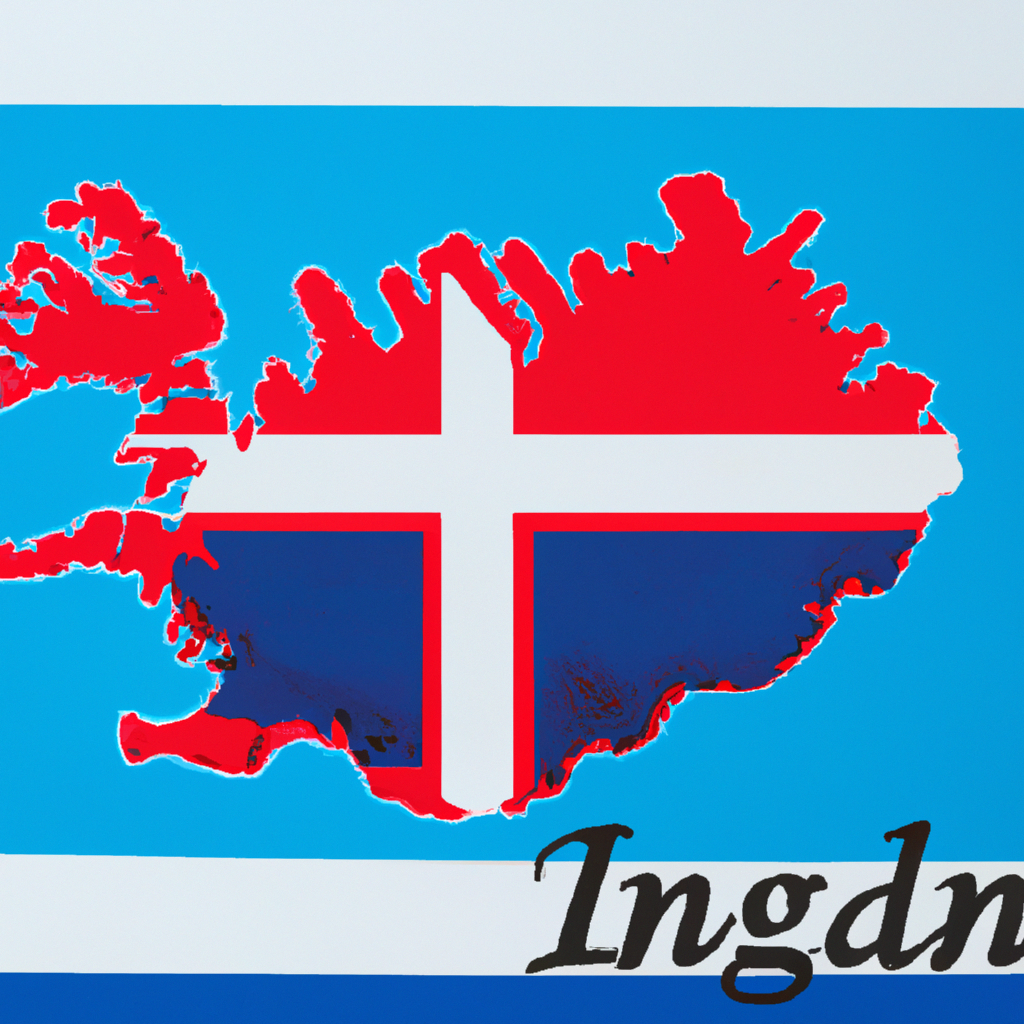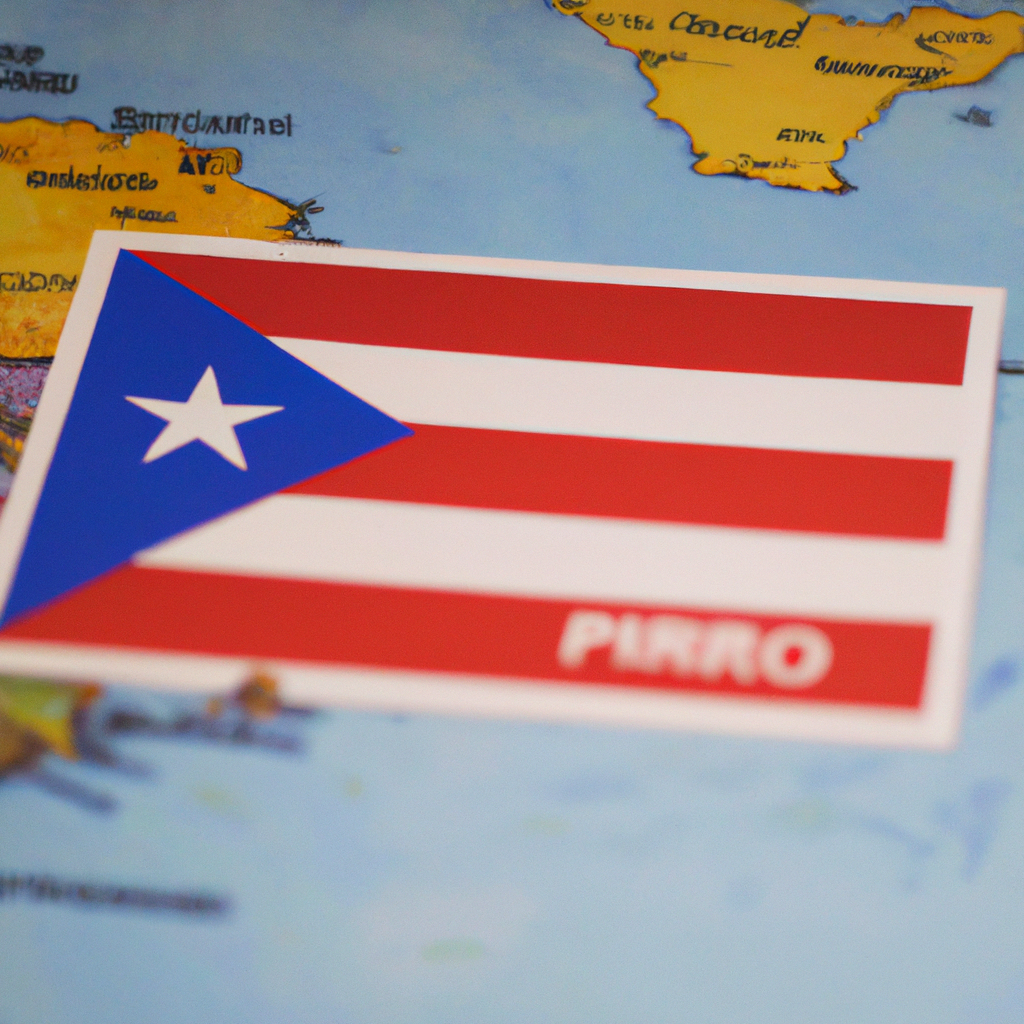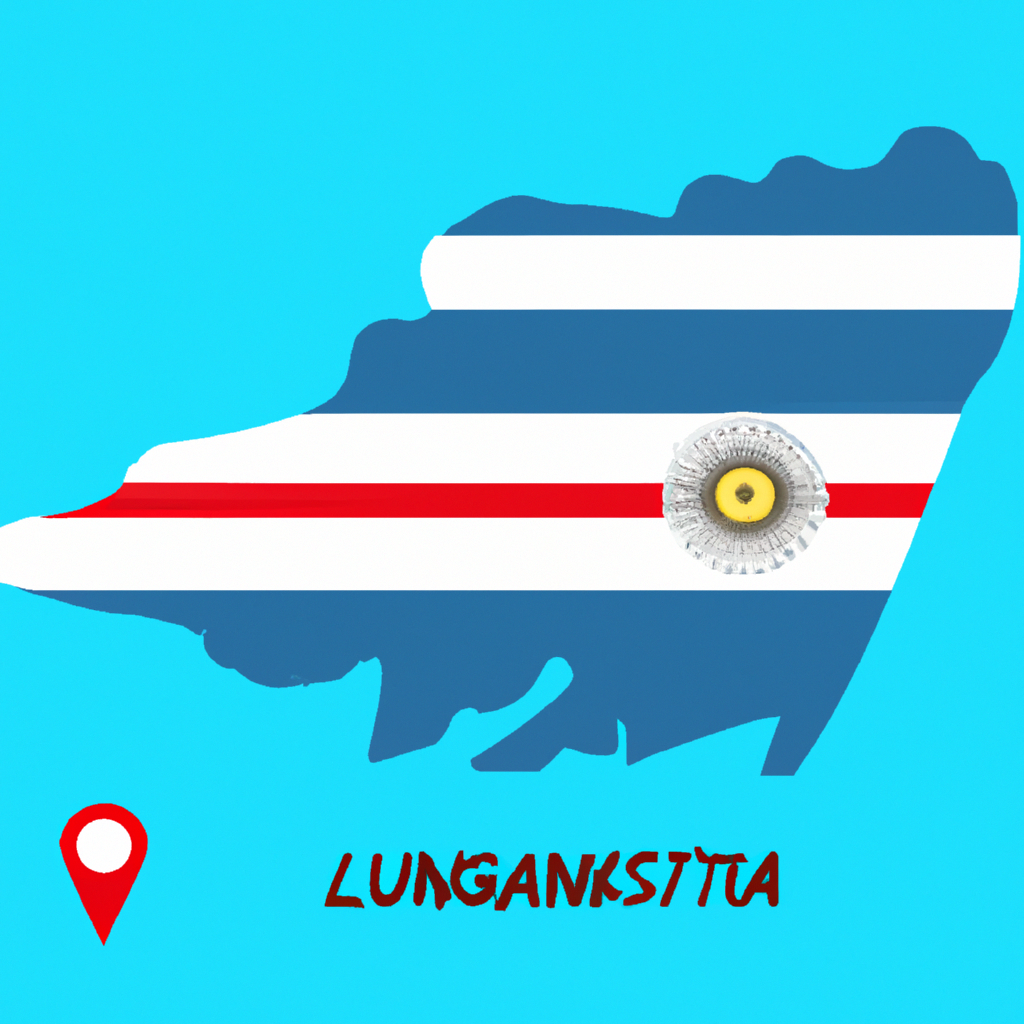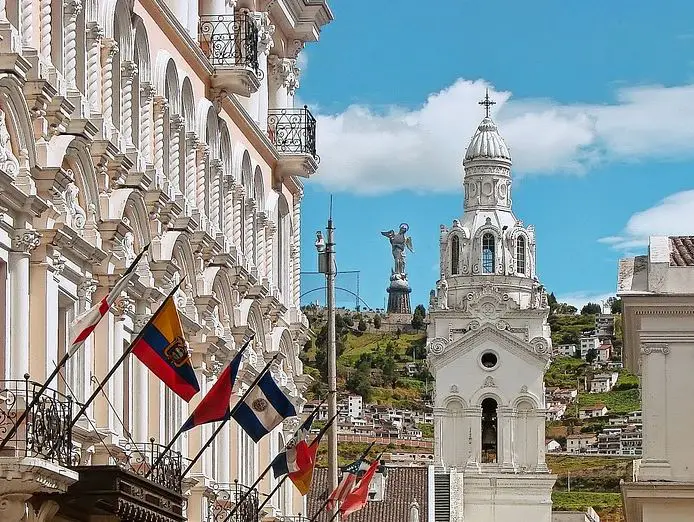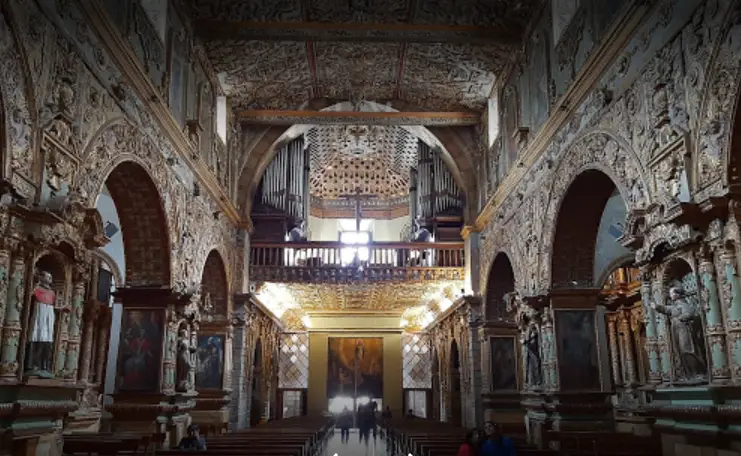Quito, Ecuador: Interesting Facts,History, Things to do,Why to Visit
Post ByAdequate Travel
Quito, Ecuador is an incredible city with a vibrant culture and fascinating history. With its unique architecture, beautiful colonial buildings, and plethora of things to do, it's no surprise that it is one of the most popular tourist destination in South America. Quito has plenty of interesting facts, historic sites and attractions, and activities to make your trip memorable. Its cultural heritage is evident in its archaeological sites, traditional cuisine, and unique festivals. Furthermore, its diverse scenery and natural beauty make it a great place to explore. So why not come and visit this amazing city of Quito, Ecuador and discover all it has to offer? Get ready for a great adventure!
Ecuador is a country located on the western coast of South America. It is known for its diverse geography, including the Andes Mountains, Amazon rainforest, and the Galapagos Islands. The country has a population of approximately 17 million people and its capital is Quito. Ecuador has a rich cultural heritage, with a mix of Indigenous, Spanish, and African influences. The economy is primarily based on oil exports, agriculture, and tourism. Despite being considered a middle-income country, Ecuador faces challenges such as poverty, inequality, and political instability.Exploring the city's diverse neighborhoods is one of the best ways to discover the best ecuador attractions, each with its own character and charm.
Interesting facts
1. Biodiversity Hotspot
Ecuador is known for its exceptional biodiversity, earning it the title of a biodiversity hotspot. This South American country is home to a vast array of species, including more than 1,600 bird species, 4,500 species of orchids, and 16,000 species of plants. The Galapagos Islands, located off the coast of Ecuador, are particularly famous for their unique flora and fauna.
2. The Equator
Ecuador is the country after which the equator is named. The equator is an imaginary line that divides the Earth into two hemispheres, and it passes through Ecuador, giving the country its name. In fact, the capital city of Quito has a monument called Mitad del Mundo (Middle of the World), which marks the exact location of the equator.
3. Volcanic Landscapes
Ecuador is known for its stunning volcanic landscapes. The country is home to several active volcanoes, including Cotopaxi, which is one of the highest active volcanoes in the world. The volcanic activity in Ecuador has shaped its geography, creating beautiful mountain ranges, valleys, and high-altitude lakes.
4. Cultural and Indigenous Heritage
Ecuador has a rich cultural heritage, with a mix of indigenous, Spanish, and African influences. The country is home to many indigenous communities, each with its own traditions, languages, and customs. One of the most famous indigenous groups in Ecuador is the Quechua people, who have a rich history and still preserve their traditional way of life.
5. Chocolate Production
Ecuador is one of the world's largest producers of cocoa beans, which are the main ingredient in chocolate. The country is known for its high-quality cocoa and has been producing chocolate for centuries. Many chocolate enthusiasts travel to Ecuador to explore cocoa plantations and learn about the chocolate-making process.
Overall, Ecuador is a fascinating country with its diverse wildlife, stunning landscapes, cultural heritage, and role in chocolate production. These unique aspects contribute to its appeal for tourists and nature enthusiasts worldwide.From museums to parks,ecuador tourist attractions offer something for everyone, making it a versatile destination for all type of tourists.History of Ecuador
The history of Ecuador is characterized by a rich and diverse cultural heritage, indigenous civilizations, colonialism, revolutions, and political instability. Here is a brief overview of the history of this South American country:Pre-Colonial Era
Before the arrival of the Spanish colonizers, Ecuador was inhabited by various indigenous cultures. The most advanced civilization was the Inca empire, which controlled a significant portion of present-day Ecuador. The Incas established their power through military conquests and built an extensive network of roads and infrastructure.Spanish Colonialism
In 1532, the Spanish conquistador Francisco Pizarro arrived in Ecuador and began the process of colonization. The Spanish forces quickly overthrew the Inca emperor, Atahualpa, and established the Viceroyalty of Peru. Ecuador became a part of this viceroyalty and remained under Spanish rule for over 300 years.Independence and Political Instability
Ecuador, along with several other South American countries, fought for independence from Spain in the early 19th century. The liberator Simón Bolívar played a crucial role in Ecuador's independence movement. After gaining independence in 1822, Ecuador became a part of the Gran Colombia, a federation led by Bolívar. However, internal conflicts and disputes led to the dissolution of Gran Colombia, and Ecuador became an independent republic in 1830.Oil Boom and Economic Challenges
Ecuador experienced an oil boom in the 1970s, transforming its economy. However, mismanagement, corruption, and heavy reliance on oil revenues led to economic fluctuations and difficulties. The country faced multiple financial crises in the late 20th and early 21st centuries, with high inflation and unemployment rates.Social Movements and Political Change
Ecuador witnessed various social movements and political changes during the late 20th century. Indigenous communities fought for land rights and cultural recognition, leading to constitutional reforms in 1998 that recognized Ecuador as a multiethnic and pluricultural nation. The country also went through several political crises and changes in government leadership.Recent Developments
In recent years, Ecuador has focused on economic diversification, social welfare programs, and environmental conservation. The country has made progress in reducing poverty rates and increasing access to education and healthcare. However, challenges such as income inequality, environmental preservation, and political stability remain.Overall, Ecuador's history is a complex tapestry of indigenous civilizations, colonialism, revolutions, and contemporary socio-economic challenges. It is a country that continues to evolve and shape its path towards a more inclusive and prosperous future.Exploring the rich heritage of historical sites in ecuador is a journey through time and culture.Famous Things of Ecuador
1. Galapagos Islands
The Galapagos Islands are a renowned archipelago located in the Pacific Ocean. They are famous for their diverse wildlife and unique ecosystem, being home to many endemic species. Some examples of the species found on the islands include the Galapagos giant tortoise, marine iguanas, blue-footed boobies, and Galapagos penguins. The islands offer stunning landscapes and opportunities for activities such as snorkeling, diving, and hiking.
2. Quito's Historic Center
The historic center of Quito, the capital of Ecuador, is a UNESCO World Heritage site. This place is known for its well-preserved colonial architecture and historical significance. The area is filled with beautiful churches, narrow cobblestone streets, and vibrant squares. One of the notable examples is the Church and Monastery of San Francisco, which dates back to the 16th century.
3. Avenue of the Volcanoes
The Avenue of the Volcanoes refers to a section of the Ecuadorian Andes where numerous towering volcanoes line the landscape. This region offers breathtaking views and opportunities for hiking, climbing, and enjoying the natural beauty of Ecuador. Some examples of the volcanoes found along this avenue include Cotopaxi, Chimborazo, and Cayambe.
4. Otavalo Market
The Otavalo Market is one of the largest and most famous indigenous markets in South America. It takes place in the town of Otavalo and attracts visitors from all over the world. The market is known for its vibrant colors and for offering a wide variety of traditional textiles, handicrafts, and fresh produce. Visitors can immerse themselves in the local culture, interact with indigenous communities, and purchase unique souvenirs.
5. Ingapirca
Ingapirca is the best-preserved Inca archaeological site in Ecuador. It was once an important religious and political center for the Inca Empire. The most prominent structure at Ingapirca is the Temple of the Sun, which features impressive stonework and represents the Inca's advanced engineering skills. Visitors can explore the ruins, learn about Inca history, and enjoy the scenic surroundings.
Discover some unique facts about ecuador that will leave you amaze and intrigue.Culture of Ecuador
Ecuador is a diverse country with a rich cultural heritage. The country is home to various indigenous communities, as well as a blend of European, African, and Asian influences. This unique mix of cultures has shaped the traditions, customs, and way of life in Ecuador.
Indigenous Influence
Indigenous cultures have a significant presence in Ecuador. The country is home to numerous indigenous groups, including the Quechua, Shuar, and Otavalo people. These communities have preserved their traditional practices, languages, and artwork throughout generations. For example, the Otavalo people are known for their vibrant textiles and intricate hand-woven garments, while the Shuar are recognized for their craftsmanship in creating ceremonial masks.
European Heritage
Spanish colonialism has greatly influenced the culture and traditions of Ecuador. The Spanish brought their language, Roman Catholic religion, and architecture to the country. Many of Ecuador's historical buildings exhibit Spanish colonial architecture, such as the San Francisco Church in Quito. Additionally, Catholicism plays a significant role in the lives of Ecuadorians, with religious festivals and processions being important cultural events.
African and Afro-Ecuadorian Culture
African influence is also present in Ecuador's culture, particularly in the coastal regions. Afro-Ecuadorians have contributed to the country's music, dance, and cuisine. The marimba, a traditional musical instrument, is commonly used in Afro-Ecuadorian music, which is characterized by its lively rhythms and energetic dance. Afro-Ecuadorian cuisine includes dishes such as encebollado, a seafood soup, and bolón de verde, a dish made from green plantains.
Asian Influence
The Asian influence in Ecuador can be traced back to the 19th century when Chinese immigrants arrived in the country. They brought their culinary traditions, resulting in dishes like chaulafan, a fried rice dish, and wanton soup. The Chinese have also made significant contributions to the arts and crafts scene in Ecuador, particularly in ceramics and pottery.
In conclusion, Ecuador's culture is a vibrant blend of indigenous, European, African, and Asian influences. The country's diverse communities have preserved their traditions, languages, arts, and cuisine, creating a rich cultural tapestry that is unique to Ecuador.Immerse yourself in the local culture by exploring ecuador's top-rated tourist attractions.Cuisine of Ecuador
Ecuadorian cuisine is diverse and is heavily influenced by the country's indigenous cultures, as well as Spanish, African, and other European culinary traditions. The cuisine varies regionally, with each area having its own specialties and flavors.1. Coastal Cuisine:The coastal region of Ecuador is famed for its delicious seafood dishes. Ceviche is a popular dish made with raw seafood (usually shrimp or white fish) marinated in lemon or lime juice, and is typically served with corn chips. Other popular dishes include encebollado, a fish soup made with onions and yuca, and corviche, a deep-fried fish or shrimp empanada.2. Highland Cuisine:In the highlands, traditional dishes include llapingachos, which are thick potato pancakes often served with grilled meats and peanut sauce. Fanesca, a hearty soup made with grains, beans, squash, and salted cod, is a specialty enjoyed during Easter. Locro de papas is another popular potato-based soup that is often garnished with avocado and cheese.3. Amazonian Cuisine:The Amazon region of Ecuador offers unique dishes incorporating exotic ingredients found in the rainforest. One example is yuca bread, made from the starchy root vegetable common in the region. Another traditional dish is casabe, a flatbread made from yuca flour. Additionally, various types of grilled meats, such as chonta (heart of palm) and fish like pirarucu or paiche, are commonly enjoyed.4. Street Food:Street food in Ecuador is a vibrant and inexpensive way to experience the local cuisine. Some popular street food items include empanadas, which are stuffed pastries often filled with cheese, meat, or vegetables, and llapingachos, already mentioned above. Another must-try street food is the humble but delicious hornado, roasted pork served with potatoes, mote (hominy), and salad.5. Traditional Beverages:To complement the cuisine, Ecuador offers some unique traditional beverages. Chicha is a fermented corn-based beverage found throughout the country. Cocona juice, made from a tropical fruit native to the Amazon, is refreshing and commonly served. Another popular drink is canelazo, a warm cocktail made from aguardiente (anise-flavored liquor), cinnamon, naranjilla juice, and sugar.In conclusion, Ecuadorian cuisine is a fusion of indigenous, European, and African flavors, resulting in a diverse range of dishes and unique culinary experiences. From coastal seafood delights to highland potato-based soups and Amazonian specialties, Ecuador has something to offer for every palate.Uncover the best ecuador attractions that will leave you awe-inspired and wanting more.1. Visit the Galapagos Islands
Ecuador is famous for its stunning Galapagos Islands, which are located about 600 miles off its coast. These islands are a haven for biodiversity, with unique species found nowhere else in the world. Visitors can engage in activities such as snorkeling, scuba diving, hiking, and wildlife viewing. For example, you can spot giant tortoises, marine iguanas, and blue-footed boobies.
2. Explore Quito's Historic Center
Quito, the capital of Ecuador, boasts a beautifully preserved historic center, which is a UNESCO World Heritage site. The historic center is filled with stunning colonial architecture, narrow cobblestone streets, and numerous churches and plazas. You can visit the iconic Basilica del Voto Nacional, Plaza de la Independencia, and the Compañía de Jesús church.
3. Take a trip to the Amazon Rainforest
Ecuador is home to a portion of the Amazon Rainforest, offering a unique opportunity to immerse yourself in nature and learn about indigenous cultures. You can embark on guided tours to explore the diverse flora and fauna, go wildlife spotting, learn about traditional medicinal plants, and even stay in eco-lodges deep within the jungle.
4. Relax on the beaches of the Pacific Coast
Ecuador's Pacific Coast is lined with picturesque beaches that provide the perfect setting for relaxation and water activities. Popular beach destinations include Montañita, known for its vibrant nightlife and great surfing conditions, and Ayampe, a tranquil beach surrounded by lush hills. You can soak up the sun, swim in the ocean, try surfing or enjoy fresh seafood at beachfront restaurants.
5. Discover the Quilotoa Crater Lake
The Quilotoa Crater Lake is a breathtaking natural wonder located in the Andes Mountains. The lake's turquoise waters and surrounding landscapes create a stunning backdrop for hiking and photography. You can hike around the crater's rim, descend to the lake's shore, and even rent a kayak to explore the tranquil waters.
6. Visit the vibrant Otavalo Market
The Otavalo Market is one of the most famous indigenous markets in South America, attracting visitors from all over the world. Here, you can find a wide variety of handmade crafts, textiles, pottery, and traditional Andean goods. It's a great place to experience Ecuador's rich cultural heritage and interact with local artisans.
7. Experience adventure in Baños
Baños is known as the adventure capital of Ecuador, offering thrilling outdoor activities in a stunning setting. You can go whitewater rafting, canyoning, ziplining, and bungee jumping. Additionally, Baños is famous for its hot springs, where you can relax and rejuvenate after an action-packed day.
8. Explore the Cotopaxi National Park
Cotopaxi National Park is home to the majestic Cotopaxi volcano, one of the highest active volcanoes in the world. You can take guided hikes to reach the volcano's summit or explore the park's diverse landscapes, including highland moors, volcanic rocks, and dense forests. The park also offers opportunities for camping, horseback riding, and mountain biking.
9. Marvel at the Devil's Nose Train
The Devil's Nose Train is an impressive engineering feat that winds through the Andes mountains, offering breathtaking views. This historic train ride takes you down a steep incline with switchbacks, making for an exhilarating experience. Along the way, you can admire stunning landscapes and learn about the fascinating history of the railway.
10. Visit the Ingapirca Ruins
The Ingapirca Ruins are the largest and most important archaeological site in Ecuador, showcasing the remains of an Inca complex. You can explore the various structures, including the Temple of the Sun, terraces, and ceremonial baths. The site provides insight into the Inca civilization and offers panoramic views of the surrounding mountains.
When planning your trip to ecuador, be sure to include the best things to do in ecuador, which encompass a wide range of cultural experiences.Climate of Ecuador
Ecuador is located on the equator, which greatly influences its climate. The country experiences a variety of climates due to its diverse geography, including highlands, coastal areas, and the Amazon rainforest.
Highlands
In the highlands, the climate is characterized by cool temperatures and frequent rainfall. The city of Quito, situated at an altitude of 2,850 meters (9,350 feet), has a mild climate with temperatures ranging from 7°C to 20°C (45°F to 68°F) throughout the year. The rainy season in the highlands generally occurs from November to May, with the most rainfall in April and May. The dry season, known as the "veranillo" (little summer), falls between June and September. Example: Quito experiences a mild climate with cool temperatures throughout the year.
Coastal Areas
The coastal areas of Ecuador have a tropical climate with high temperatures and humidity. The average temperature in cities like Guayaquil and Manta is around 25°C to 31°C (77°F to 88°F) throughout the year. The coastal region experiences two distinct seasons: a wet season from December to May and a dry season from June to November. Example: Guayaquil has a tropical climate with high temperatures and humidity throughout the year.
Amazon Rainforest
The Amazon rainforest in Ecuador has a hot and humid climate, with high levels of precipitation. Annual temperatures range from 22°C to 28°C (72°F to 82°F). The rainforest experiences heavy rainfall throughout the year, with the wettest months being April to June and October to December. Example: The Amazon rainforest in Ecuador has a hot and humid climate with heavy rainfall throughout the year.
In conclusion, Ecuador's climate is diverse due to its geographical variations. The highlands have mild temperatures and frequent rainfall, the coastal areas have a tropical climate with high temperatures, and the Amazon rainforest is hot and humid with heavy rainfall. Understanding the different climates in Ecuador is important for travelers and residents to plan their activities and pack accordingly.
Exploring the city's diverse neighborhoods is one of the best ways to discover the best ecuador attractions, each with its own character and charm.Popular activities in Ecuador
Ecuador is a country known for its diverse landscape, vibrant culture, and adventure opportunities. Here are some of the popular activities you can engage in while visiting Ecuador:
1. Exploring the Galapagos Islands
The Galapagos Islands, a UNESCO World Heritage site, are a major attraction in Ecuador. Visitors can engage in activities such as snorkeling, scuba diving, hiking, and wildlife watching. The islands are home to unique species such as giant tortoises, marine iguanas, and blue-footed boobies.
2. Hiking in the Andes Mountains
Ecuador is home to a significant portion of the Andes Mountains, offering numerous opportunities for hiking enthusiasts. You can trek through lush forests, visit remote villages, and even climb volcanoes like Cotopaxi and Chimborazo.
3. Discovering the Amazon Rainforest
The Amazon Rainforest covers a large part of Ecuador, providing a fascinating experience for nature enthusiasts. You can take guided tours to explore the dense jungle, spot unique wildlife, interact with indigenous communities, and even stay in eco-lodges.
4. Visiting historic cities
Ecuador has several charming historic cities that are worth exploring. Quito, the capital, boasts a well-preserved historic center and is known for its colonial architecture. Cuenca, another UNESCO World Heritage site, offers picturesque streets, impressive churches, and a vibrant arts scene.
5. Enjoying water sports along the coast
Ecuador has a beautiful coastline along the Pacific Ocean, offering opportunities for water sports like surfing, kayaking, and fishing. The coastal towns of Montañita and Puerto Lopez are known for their excellent surf breaks and vibrant beach culture.
6. Experiencing traditional Andean culture
Ecuador's indigenous communities have managed to preserve their rich culture and traditions. You can visit towns like Otavalo, known for its famous markets showcasing colorful textiles and handicrafts. Participating in traditional ceremonies and trying local cuisine is also a great way to immerse yourself in the Andean culture.
These are just a few examples of the popular activities you can engage in while visiting Ecuador. The country offers a wide range of experiences, ensuring that every traveler can find something that suits their interests and preferences. Whether you are an adventure seeker, nature lover, or culture enthusiast, Ecuador has something to offer for everyone.Plan your trip with a list of the best things to do in ecuador, catering to all interests.Nightlife in Ecuador: Nightlife in Ecuador is vibrant and varied, offering a mix of traditional and contemporary entertainment options. From lively clubs and bars to cultural events and live music venues, there is something for everyone to enjoy during the night in Ecuador.1. Clubs and Bars: Ecuador has a bustling nightlife scene, particularly in cities like Quito and Guayaquil. There are numerous clubs and bars catering to different tastes and preferences. For example, in Quito, you can find trendy clubs that play a wide variety of music genres, ranging from electronic to Latin music. Some popular clubs include Bungalow 6, Dirty Sanchez, and La Casa de la Ronda. In Guayaquil, the La Zona Rosa neighborhood is known for its lively bars and clubs, such as Bongo International, Lolas, and La Paleta.2. Cultural Events: Ecuador's rich cultural heritage is also reflected in its nightlife. Various cultural events and festivals take place during the evenings, providing visitors with an opportunity to experience traditional music, dance, and folklore. The city of Cuenca, for example, hosts festivals such as the Corpus Christi celebration and the Festival of Folklore and Arts. These events often include live performances by local musicians and dancers, creating a vibrant and immersive cultural experience.3. Live Music Venues: If you enjoy live music, Ecuador offers a variety of venues where you can enjoy performances by local and international artists. Some popular live music venues include Patio de Comedias in Quito, which features acoustic performances, and Casa de la Musica in Guayaquil, which hosts concerts and shows by well-known musicians. These venues often showcase a mix of genres, including Latin, rock, jazz, and traditional Ecuadorian music.4. Karaoke and Comedy Clubs: For those who enjoy a more interactive and entertaining night out, Ecuador has several karaoke and comedy clubs. These places offer a fun and lighthearted atmosphere, allowing visitors to sing their favorite songs or enjoy stand-up comedy performances. Examples of popular karaoke and comedy clubs include Kukaramakara in Quito and Comedy Club Quito.In conclusion, Ecuador's nightlife scene offers a diverse range of options to suit different tastes and preferences. Whether you prefer dancing the night away at a trendy club, immersing yourself in the country's rich cultural traditions, enjoying live music performances, or simply having a fun-filled night of karaoke or comedy, Ecuador has something for everyone. So, make sure to explore the vibrant nightlife scene while visiting this beautiful country.Exploring the city's diverse neighborhoods is one of the best ways to discover the best ecuador attractions, each with its own character and charm.
Reasons to Visit Ecuador
Ecuador is a diverse and breathtaking country that offers something for every type of traveler. Here are some compelling reasons to visit this South American gem:
1. Breathtaking Landscapes
From the lush, tropical rainforests of the Amazon to the towering peaks of the Andes and the pristine beaches of the Galapagos Islands, Ecuador boasts an array of stunning landscapes that will leave you in awe. Experience the beauty of these diverse ecosystems and immerse yourself in the splendor of nature.
Example: Explore the cloud forests of Mindo, where you can spot various species of birds and vibrant orchids.
Example: Hike the Quilotoa Loop to witness the captivating emerald-green crater lake nestled within the Andes.
2. Biodiversity and Wildlife
As one of the world's most biodiverse countries, Ecuador is a paradise for nature enthusiasts and wildlife lovers. The Galapagos Islands, in particular, are renowned for their unique and diverse flora and fauna, including the famous giant tortoises and marine iguanas.
Example: Snorkel alongside playful sea lions and swim with curious penguins in the crystal-clear waters of the Galapagos.
Example: Take a guided tour through the Amazon rainforest to spot an incredible variety of wildlife, such as monkeys, toucans, and pink river dolphins.
3. Rich Cultural Heritage
Ecuador is home to a rich tapestry of indigenous cultures, each with its own unique traditions, languages, and customs. Explore the historic cities and towns to discover fascinating colonial architecture, vibrant markets, and learn about the indigenous communities that have preserved their heritage for centuries.
Example: Visit the colorful indigenous market in Otavalo, renowned for its handicrafts, textiles, and traditional Andean music.
Example: Discover the UNESCO World Heritage site of Quito's historic center, with its beautifully preserved colonial buildings and stunning churches.
4. Adventure Activities
For adrenaline junkies, Ecuador offers an abundance of thrilling outdoor activities. From white-water rafting in the roaring rivers to mountain biking along stunning trails, there is no shortage of adventure opportunities for thrill-seekers.
Example: Experience the exhilarating Devil's Nose Train Journey, known for its steep descents and breathtaking mountain views.
Example: Go surfing in Montañita, a coastal town known for its excellent waves and vibrant party scene.
5. Delicious Cuisine
Ecuadorian cuisine is a delightful fusion of flavors influenced by indigenous, Spanish, and African traditions. Indulge in traditional dishes such as ceviche, llapingachos (potato pancakes), and hornado (roast pork), or try exotic fruits and Ecuador's famous chocolate.
Example: Sample the delicious street food in Quito, including empanadas, grilled meats, and fresh fruit juices.
Example: Take a coffee plantation tour in the Andean region to learn about the process of cultivating and producing Ecuador's renowned Arabica coffee beans.
In conclusion, Ecuador offers a captivating blend of stunning landscapes, unique wildlife, rich cultural heritage, thrilling adventures, and delicious cuisine. Whether you seek an immersive nature experience, cultural exploration, or adrenaline-pumping activities, Ecuador has it all. Come and discover the wonders of this remarkable country.Whether you're a history buff or an adventure seeker, ecuador has an attraction for you. So, don't miss the chance to visit popular places in ecuadorNumber of Days Required to Visit Ecuador
Ecuador is a diverse and beautiful country located on the western coast of South America. From the stunning Galapagos Islands to the vibrant cities of Quito and Guayaquil, there is a lot to explore in Ecuador. The number of days required to visit Ecuador depends on various factors such as your interests, budget, and the places you want to visit. However, here are some general guidelines to help you plan your trip:
1. Galapagos Islands:
If you are planning to visit the iconic Galapagos Islands, you should allocate at least 5-7 days. This will give you enough time to explore the different islands, witness the unique wildlife, and engage in activities like snorkeling and hiking. However, if you have limited time, you can opt for shorter cruises or day trips to experience the highlights of the islands.
2. Quito:
Quito, the capital city of Ecuador, has a rich history and is known for its well-preserved colonial center. To explore the city and its surroundings, 2-3 days are usually sufficient. This will allow you to visit attractions such as the historic Old Town, the Mitad del Mundo monument, and the TelefériQo cable car that offers breathtaking views of the city.
3. Guayaquil:
Guayaquil is the largest city in Ecuador and offers a mix of urban attractions and natural beauty. Spending 1-2 days in Guayaquil will give you enough time to visit popular spots like Malecón 2000, a waterfront promenade, and the vibrant La Perla neighborhood. You can also take day trips from Guayaquil to nearby attractions such as the Cerro Blanco Protected Forest or the coastal town of Playas.
4. Amazon Rainforest:
If you want to explore the Amazon Rainforest in Ecuador, it is recommended to allocate at least 3-5 days. This will allow you to fully immerse yourself in the diverse ecosystem, go on jungle hikes, canoe rides, and spot unique wildlife. There are various lodges and tour operators that offer multi-day packages to experience the Amazon rainforest in its full glory.
5. Other Destinations:
Ecuador is also home to other remarkable destinations such as the Cotopaxi National Park, the Andes mountains, and the historic city of Cuenca. Depending on your interests, you can allocate 2-3 days for each of these destinations. This will give you enough time to appreciate their beauty and participate in activities like hiking, mountain biking, or exploring cultural sites.
Overall, the number of days required to visit Ecuador can vary depending on your preferences and the specific places you want to explore. It is advisable to plan your itinerary in advance, considering transportation times and allowing for some flexibility to fully enjoy the unique experiences this country has to offer.
ecuador tourist attractions offer a diverse range of experiences for every traveler.Significance of Ecuador
Ecuador is a country located in South America that holds great significance due to various factors:
1. Biodiversity
Ecuador is one of the world's most biodiverse countries, housing a remarkable variety of plant and animal species. The country is home to the Galápagos Islands, which are renowned for their unique wildlife and were instrumental in Charles Darwin's development of the theory of evolution. Additionally, Ecuador contains diverse ecosystems such as the Amazon rainforest, the Andes Mountains, and the Pacific coastline, contributing to its rich biodiversity.
2. Cultural Heritage
Ecuador has a rich cultural history, with indigenous communities that have preserved their traditions and way of life for centuries. The country is known for its vibrant indigenous markets, where locals sell traditional crafts, textiles, and food. The city of Quito, Ecuador's capital, is a UNESCO World Heritage site and is famous for its well-preserved colonial architecture.
3. Natural Landscapes and Outdoor Activities
Ecuador offers a wide range of natural landscapes and outdoor activities for visitors. The country is home to numerous volcanoes, including Cotopaxi, one of the highest active volcanoes in the world. These volcanoes provide opportunities for hiking, climbing, and photography. Ecuador also boasts beautiful national parks like Yasuni National Park, Cajas National Park, and Sangay National Park, where visitors can immerse themselves in stunning nature and observe unique fauna and flora.
4. Sustainable Tourism
Ecuador has made considerable efforts to promote sustainable and responsible tourism. The country has embraced ecotourism and endeavors to protect its natural resources and cultural heritage. The Galápagos Islands, a UNESCO World Heritage site, have strict regulations to preserve the delicate ecosystem. Tourists visiting Ecuador can engage in eco-friendly activities such as wildlife observation, nature hikes, and community-based tourism, contributing to the conservation and empowerment of local communities.
In conclusion, Ecuador's significance lies in its extraordinary biodiversity, rich cultural heritage, diverse natural landscapes, and commitment to sustainable tourism. These factors make it an attractive destination for nature lovers, adventure seekers, and those interested in immersing themselves in indigenous cultures.From hidden gems to iconic landmarks, ecuador has something for every traveler's taste.FAQ's of Ecuador
1. What is the official language of Ecuador?
Ecuador's official language is Spanish. This means that most governmental and official transactions, as well as communication with locals, will be conducted in Spanish.
Example: When visiting Ecuador, it is important to have some basic knowledge of Spanish phrases and greetings to communicate with the locals and navigate through daily interactions.
2. What is the currency of Ecuador?
The official currency of Ecuador is the US dollar. Ecuador adopted the US dollar as its official currency in the year 2000. This means that all transactions and prices are listed and paid in US dollars.
Example: If you are planning a trip to Ecuador, it is important to bring US dollars or have access to an ATM that dispenses US dollars to ensure smooth transactions during your stay.
3. Do I need a visa to visit Ecuador?
Most visitors to Ecuador do not require a visa for stays up to 90 days. This includes citizens from many countries, such as the United States, Canada, the United Kingdom, and most European Union countries.
Example: If you are planning a short-term visit to Ecuador for tourism or business purposes, you can typically enter the country as a tourist without the need for a visa. However, it is always recommended to check the latest requirements and regulations before traveling.
4. What is the weather like in Ecuador?
Ecuador's weather varies greatly depending on the region due to its diverse geography. The country is divided into four main regions: the coast, the highlands (Andes Mountains), the Amazon rainforest, and the Galapagos Islands. Each region has its own unique climate.
Example: The coastal region of Ecuador has a tropical climate with high humidity and temperatures ranging from 25°C to 30°C (77°F to 86°F) throughout the year. Meanwhile, the highlands experience cooler temperatures due to the higher altitude, with average temperatures ranging from 7°C to 20°C (45°F to 68°F) depending on the location and time of year.
5. What are some popular tourist attractions in Ecuador?
Ecuador is known for its stunning natural landscapes, diverse wildlife, and rich culture. Some popular tourist attractions in Ecuador include the Galapagos Islands, the historic center of Quito (a UNESCO World Heritage site), the Amazon rainforest, Cotopaxi National Park, the Otavalo Market, and the "Avenue of the Volcanoes" in the Andes Mountains.
Example: A visit to Ecuador is incomplete without exploring the unique ecosystem of the Galapagos Islands, where you can observe various species of wildlife, including the famous Galapagos tortoises. Additionally, exploring the historic sites and vibrant markets in Quito offers a glimpse into the country's rich cultural heritage.
Note: The use of h5 HTML tags and p HTML tags is for illustrative purposes only. In an actual HTML document, the tags would be properly styled with CSS for headings and paragraph formatting.Uncover the best ecuador attractions that will leave you awe-inspired and wanting more.
